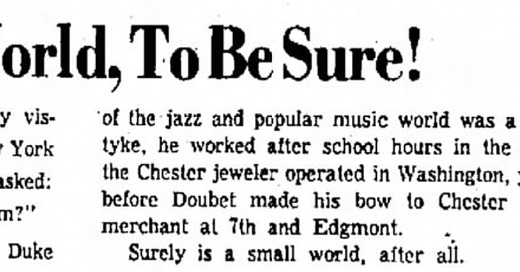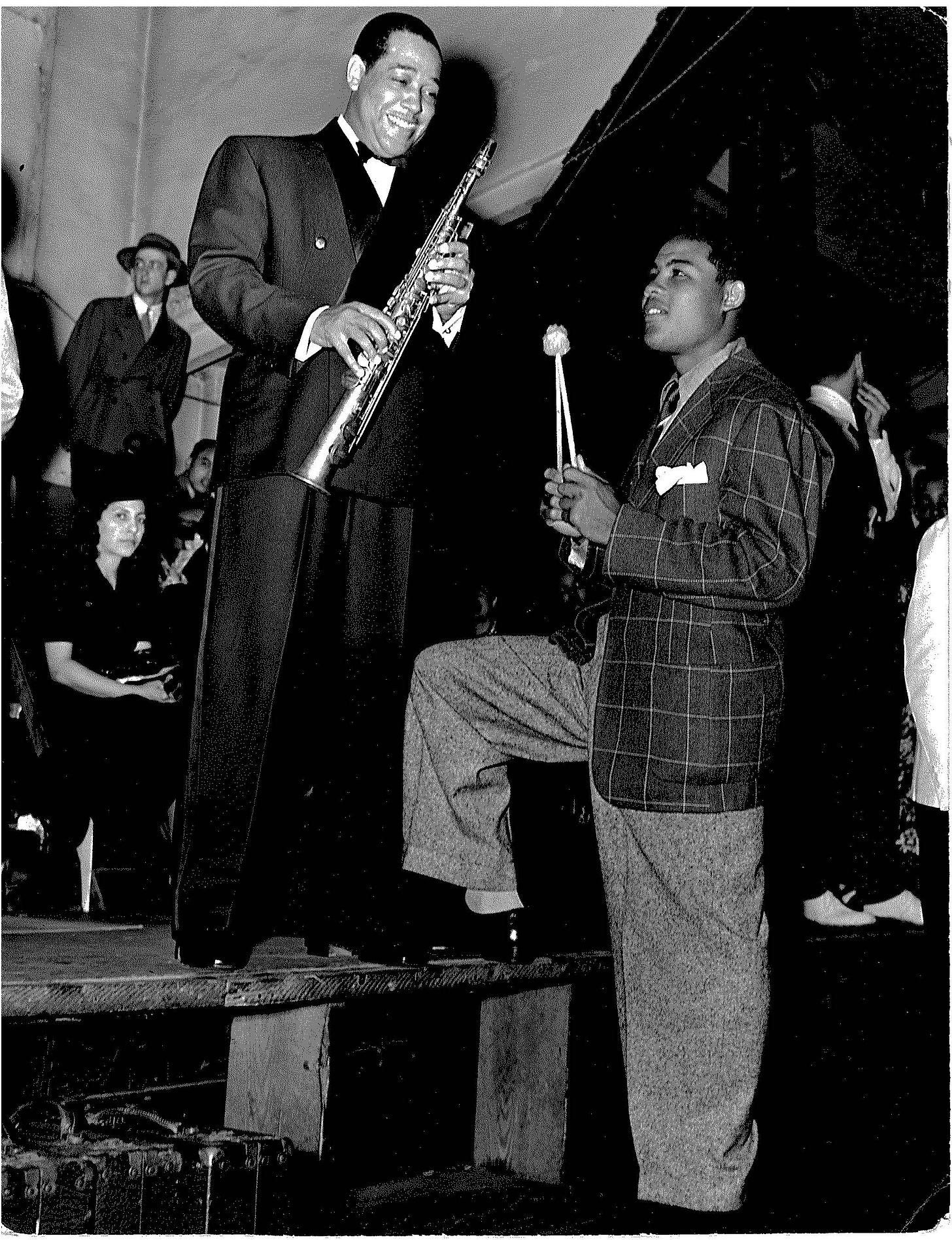Last time we heard a radio interview with Ellington from 1940 that has never before been available, and a bit of music. This time we’ll hear an Ellington interview that was once issued but remains rare, and some music that has never been heard before. The interview was released on the Duke Ellington Centennial Collection, a set that contains one CD and one DVD. (This is often confused with the Centennial Edition, a 24-CD set issued by the same label, RCA.) The CD of the Collection also contained two radio broadcasts by the big band that have never been released anywhere else.
The interview included on that Collection was the only audio track on the DVD, so it was easily overlooked. But it’s quite interesting. Unlike the one we heard last time, which was fully scripted, this one is a spontaneous 11-minute conversation for the same BBC series, “Radio Newsreel,” with Doug Hatton. It was held on January 28, 1941, backstage at Casa Mañana, where the band performed for most of January 1941, and through the first three weeks of February. Casa Mañana was at 8781 Washington Boulevard in Culver City, Los Angeles County, about a mile from what was then the MGM film studios (and is now the Sony studios).
You’ll hear Hatton say that the interview is being “transcribed,” meaning pre-recorded. You’ll be able to tell that this one is not scripted. It’s clear because both parties stumble now and then—nothing major, but just enough to tell that they are speaking spontaneously. For example, at 0:48 Hatton says, “My next question was going to be..,” because he was caught by surprise by what Duke just said.
At 1:15, Duke lists three of his first non-music jobs. Duke himself mentioned that at about age 16 he wrote his first piece, “Soda Fountain Rag,” because he was a “soda jerker,” serving sodas and ice cream. He said, “I worked in a place called ‘The Poodle Dog.’ There was a great pianist there, Lester Dishman.” But the other two jobs aren’t usually mentioned in the literature—doing errands and deliveries for a jewelry company and a grocery company. The jewelry job is mentioned in a newspaper article cited by the amazing Ellington chronology website. Here it is:
(Chester Times, August 27, 1955, p.5.)
They discuss how he got into music, they talk about swing music (2:19), and about rehearsing (3:38). At 3:49, Duke talks about a young man who joined them “about a year ago” named Billy Strayhorn. Other topics are “boogie woogie” (at 5:26), and his first paying job which led to him playing for school dances (6:28). The band is heard very faintly in the background from 7:10 onward.
There’s an interesting moment at 9:13 when he is asked about his hobbies. In the 1940 interview he was asked about hobbies, and he replied that he had no interests other than music. But here he says he likes to play bridge, and when pressed he says that he also follows sports and is friends with boxing champion Joe Louis. Below are Duke and Joe together at “Duke Ellington Day,” the third day of the American Negro Exposition, held at the Chicago Coliseum on August 26, 1940. Duke performed there to “10,000 wildly cheering enthusiasts of both races.” As a joke, he’s holding Johnny Hodges’ soprano sax and Joe is holding Sonny Greer’s mallets. This photo appeared in a periodical at the time, and hasn’t been seen since then. Jazz historian and Ellington expert Steven Lasker shares it with us:
In the recorded interview, there’s an awkward pause at 10:22, during which the band is heard, after which Duke says “I’m due back on the stand” (the bandstand). Let’s listen:
Because this was issued, even though only once, a few of you may have heard it before. Therefore, since it is my policy to share things that nobody has heard, I am adding a band performance of “Never No Lament” (later known as “Don’t Get Around Much Anymore”) that has never been released anywhere. I chose this number because we heard two versions of it last time. No date or location for this is known, except that a best guess places it around May or June 1940, when the piece was still new—perhaps even before it was recorded on May 4. And in any case, since we hear Cootie Williams solo on trumpet, it couldn't be later than November 1940, when he left to join Benny Goodman.
The first few notes are missing. Greer is on brushes, but he brings out the stick behind Lawrence Brown at 2:15. Blanton’s bass is prominent throughout, and he plays fills and short solo runs from 2:50 on behind Hodges. Here it is:
On the studio recording, it’s Duke who plays that last solo, not Hodges. In fact, you might wish to compare that performance with the original studio recording from May 4, 1940—here it is:
All the best,
Lewis





Brilliant
Since Duke admits working as a soda jerk this fits in with his first composition (or so I have heard) “Soda Fountain Rag”.